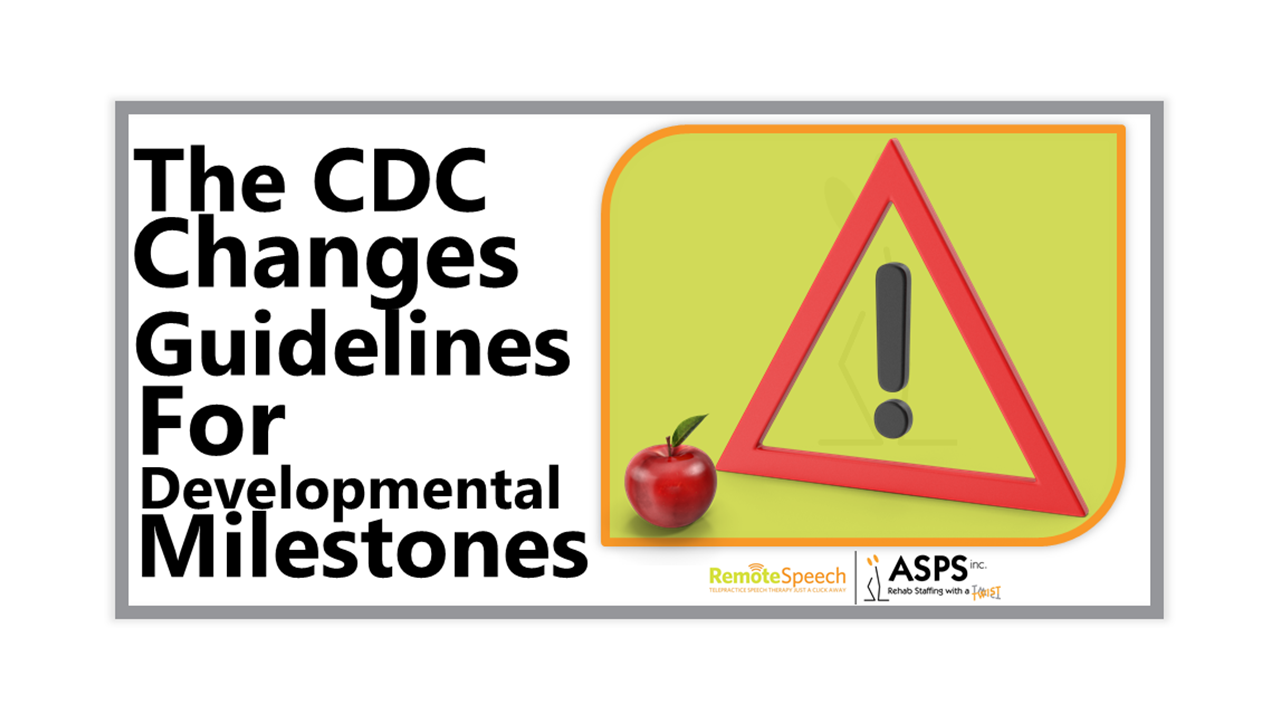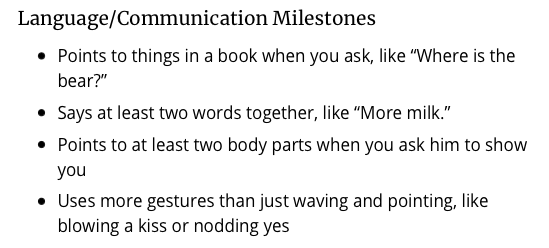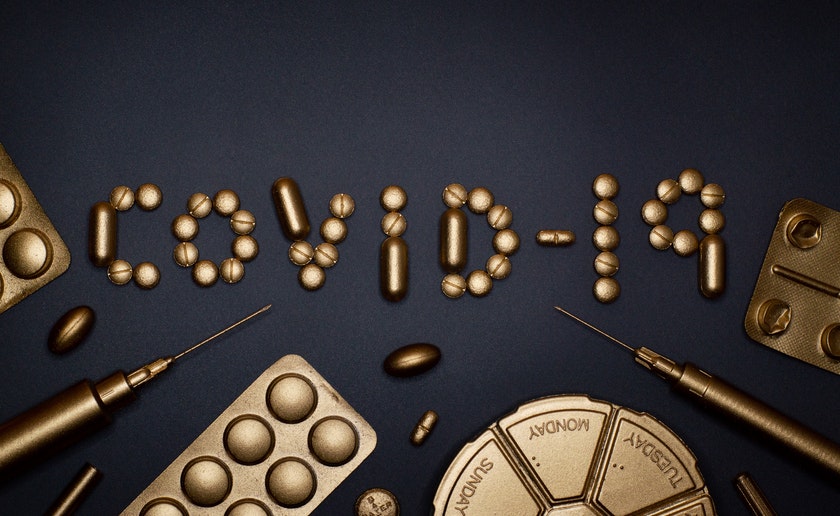
24
Feb
CDC Lowers Guidelines for Developmental Milestones
 For the first time in nearly two decades, the CDC has lowered developmental milestones for toddlers. This means that “normal” standards of development that were reserved for children of two years old have now been extended to 2.5 years old. Age 2 has always been a pivotal year in children's speech development. Many kids make major speech strides between 18-24 months, which is why Early Intervention services typically start at age 2. Accordingly, 2-year-old milestones warrant special focus.
The announcement has been met with a diverse set of reactions online, from speech-language pathologists to pediatricians. We took a look at the updated guidelines to examine what they are, why they are important, and what this could possibly mean for your child.
For the first time in nearly two decades, the CDC has lowered developmental milestones for toddlers. This means that “normal” standards of development that were reserved for children of two years old have now been extended to 2.5 years old. Age 2 has always been a pivotal year in children's speech development. Many kids make major speech strides between 18-24 months, which is why Early Intervention services typically start at age 2. Accordingly, 2-year-old milestones warrant special focus.
The announcement has been met with a diverse set of reactions online, from speech-language pathologists to pediatricians. We took a look at the updated guidelines to examine what they are, why they are important, and what this could possibly mean for your child.
What Are “Developmental Milestones?”
The CDC describes developmental milestones as: “Skills such as taking a first step, smiling for the first time, and waving “bye bye” are called developmental milestones. Children reach milestones in how they play, learn, speak, act, and move (crawling, walking, etc.). How your child plays, learns, speaks, acts, and moves offer important clues about your child’s development. Developmental milestones are things most children (75% or more) can do by a certain age."
Why are Developmental Milestones Important?
Developmental milestones offer important clues about a child’s developmental health. Reaching milestones at the typical ages shows a child is developing as expected. Reaching milestones much earlier means a child may be advanced compared with his or her peers of the same age. Not reaching milestones or reaching them much later than children the same age can be the earliest indication that a child may have a developmental delay. The CDC recommends that you check the milestones your child has reached by the end of 2 years by completing a checklist with CDC’s free Milestone Tracker mobile app, or by printing the checklist pdf . The CDC recommends that you take the checklist with you and talk with your child’s doctor at every visit about the milestones your child has reached and what to expect next.What Did the CDC Change About the Developmental Milestones?
Simply put, the CDC changed the milestones and thresholds by taking milestones that were previously assigned to 2 years, and extending them by six months (or, 2.5 years old). Before, the milestone guidelines said that at 24 months (or two years of age) a child should be able to say more than 50 words. Essentially, these new milestones put kids back by six months, which, in the context of early childhood development, is a tremendous extension. Additionally, the latest changes introduced a 30-month milestone, which didn't exist previously.PRE PANDEMIC:
Pre-pandemic, two-year-olds were typically repeating words and speaking two- to four-word sentences as well as "knowing names" of familiar things.
POST PANDEMIC:
Today, the updates milestones are heavy on pointing and gesturing, and typical 2-year-olds are only expected to say two words together. For the first time, the CDC milestones introduced expectations for the number of words spoken to be at 50 words. However, this directly conflicts with The American Speech Language and Hearing Association (ASHA), (who is clear that "saying fewer than 50 words" when a child is two years old is a sign of a "language problem." See: https://asha.org/public/early-identification-of-speech-language-and-hearing-disorders/…
ASHA is the gold standard for speech-language pathology. It is important to note that other related organizations (including ASHA) have not changed any guidance during the pandemic.
The abstract issued for the update states: "Application of the criteria established by the AAP working group and adding milestones for the 15- and 30-month health supervision visits resulted in a 26.4 percent reduction and 40.9 percent replacement of previous CDC milestones. One-third of the retained milestones were transferred to different ages; 67.7 percent of those transferred were moved to older ages."
Learn More:
For the first time, the CDC milestones introduced expectations for the number of words spoken to be at 50 words. However, this directly conflicts with The American Speech Language and Hearing Association (ASHA), (who is clear that "saying fewer than 50 words" when a child is two years old is a sign of a "language problem." See: https://asha.org/public/early-identification-of-speech-language-and-hearing-disorders/…
ASHA is the gold standard for speech-language pathology. It is important to note that other related organizations (including ASHA) have not changed any guidance during the pandemic.
The abstract issued for the update states: "Application of the criteria established by the AAP working group and adding milestones for the 15- and 30-month health supervision visits resulted in a 26.4 percent reduction and 40.9 percent replacement of previous CDC milestones. One-third of the retained milestones were transferred to different ages; 67.7 percent of those transferred were moved to older ages."
Learn More:
-
CDC lowers toddler’s speech milestone standards. Is this an impact of masking kids?
-
Local speech pathologist weighs in after CDC lowers developmental milestones for toddlers
-
CDC Changes Child Development Milestones Guidelines
 The response to the COVID-19 virus is unprecedented. Because of our unique role in children’s K-12 education, we feel a responsibility to do what we can to assist schools, therapists, and students with this transition to online learning and seclusion. To ensure that our clients remain engaged and supported, our therapists will be providing complimentary “Support Sessions” to the country’s youth. We will also be assisting schools by training therapists for remote therapy.
Click here to schedule a complimentary consultation with an Executive Member of our Team.
Abington Speech Pathology and RemoteSpeech.com are uniquely prepared to provide assistance for parents of children with Speech-Language Pathology.
About Abington Speech Pathology
Abington Speech Pathology is managed and owned by a licensed speech-langauge pathologist. All of the company’s directors are licensed and remain clinical to better direct and support both the company’s clients and the clinical staff.
Through the years the company’s client base continues to grow and remains loyal. ASPS, INC has expanded its services to include Physical therapy, Occupational therapy, Teachers of the visually and hearing impaired, and School psychologists. ASPS, INC. now operates two offices. The corporate office is in eastern PA and services all 5 major counties surrounding the metro Philadelphia area. The Southern CA office services the Los Angeles and Orange County metro areas and at this point only offers speech pathology services to all settings.
The company offers the professional staff a lending library of materials. In PA, there are 2-3 continuing educational seminars to assist on clinical growth and state and national mandated continuing education requirements.
About RemoteSpeech.com
RemoteSpeech is a subsidiary of Abington Speech Pathology Services, a multi-faceted Rehab company that has provided Speech Staffing and support throughout the country for more than 20 years. RemoteSpeech combines crystal clear voice with the sharpest video to provide next-generation video calling and high-definition video delivery.
Prior to the Covid 19 pandemic, Orna Kempler-Azulay, President of RemoteSpeech, says the demand for speech-language therapists was outpacing the supply in some cities. RemoteSpeech is here to meet the demand. With its live, face-to-face interaction, RemoteSpeech is not the next best thing to being there in person — it’s just as good, and, in some cases, even better. With advanced state-of-the-art games, activities, and interactive screen sharing, students and adults will actually look forward to their therapy sessions.
The response to the COVID-19 virus is unprecedented. Because of our unique role in children’s K-12 education, we feel a responsibility to do what we can to assist schools, therapists, and students with this transition to online learning and seclusion. To ensure that our clients remain engaged and supported, our therapists will be providing complimentary “Support Sessions” to the country’s youth. We will also be assisting schools by training therapists for remote therapy.
Click here to schedule a complimentary consultation with an Executive Member of our Team.
Abington Speech Pathology and RemoteSpeech.com are uniquely prepared to provide assistance for parents of children with Speech-Language Pathology.
About Abington Speech Pathology
Abington Speech Pathology is managed and owned by a licensed speech-langauge pathologist. All of the company’s directors are licensed and remain clinical to better direct and support both the company’s clients and the clinical staff.
Through the years the company’s client base continues to grow and remains loyal. ASPS, INC has expanded its services to include Physical therapy, Occupational therapy, Teachers of the visually and hearing impaired, and School psychologists. ASPS, INC. now operates two offices. The corporate office is in eastern PA and services all 5 major counties surrounding the metro Philadelphia area. The Southern CA office services the Los Angeles and Orange County metro areas and at this point only offers speech pathology services to all settings.
The company offers the professional staff a lending library of materials. In PA, there are 2-3 continuing educational seminars to assist on clinical growth and state and national mandated continuing education requirements.
About RemoteSpeech.com
RemoteSpeech is a subsidiary of Abington Speech Pathology Services, a multi-faceted Rehab company that has provided Speech Staffing and support throughout the country for more than 20 years. RemoteSpeech combines crystal clear voice with the sharpest video to provide next-generation video calling and high-definition video delivery.
Prior to the Covid 19 pandemic, Orna Kempler-Azulay, President of RemoteSpeech, says the demand for speech-language therapists was outpacing the supply in some cities. RemoteSpeech is here to meet the demand. With its live, face-to-face interaction, RemoteSpeech is not the next best thing to being there in person — it’s just as good, and, in some cases, even better. With advanced state-of-the-art games, activities, and interactive screen sharing, students and adults will actually look forward to their therapy sessions.





